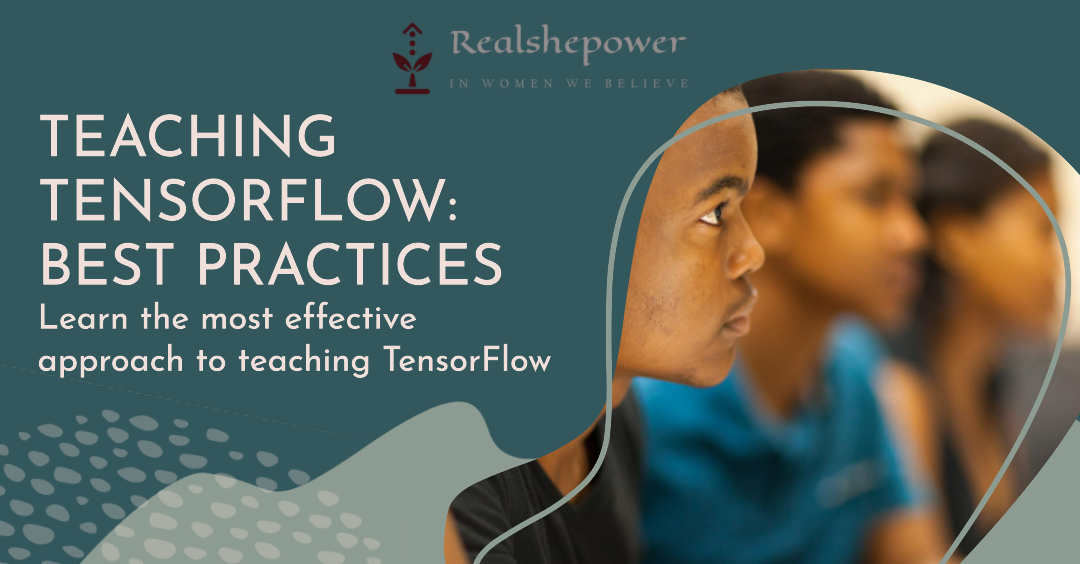TensorFlow: Building Blocks of Deep Learning


Deep learning has revolutionized the field of artificial intelligence, enabling remarkable advancements in image recognition, natural language processing, and much more. At the heart of this revolution lies TensorFlow, a powerful and versatile open-source framework developed by Google. TensorFlow provides a comprehensive set of tools and libraries that empower data scientists and developers to build and train complex neural networks. In this in-depth article, we will explore the building blocks of TensorFlow and delve into its key features, enabling you to understand and harness its true potential.
Table of Contents
What is TensorFlow?
TensorFlow, as the name suggests, revolves around tensors, which are multi-dimensional arrays representing data. It is based on a computational graph paradigm, where computations are represented as a graph of nodes, each performing specific operations. These nodes are interconnected, forming a dataflow graph that represents the flow of data through the system. TensorFlow’s flexibility lies in its ability to handle both simple and complex graphs, making it suitable for a wide range of deep learning tasks.
Key Concepts and Features:
To effectively teach TensorFlow, it is crucial to familiarize yourself with its key concepts and features. Let’s dive into the fundamental building blocks of TensorFlow:
Tensors
Tensors are the basic data structures in TensorFlow. They can be scalars, vectors, matrices, or higher-dimensional arrays. Tensors store and manipulate data during computations in the graph. TensorFlow provides a rich set of operations for performing mathematical computations on tensors, such as element-wise operations, matrix multiplications, and reductions.
Computational Graph
The computational graph is the backbone of TensorFlow. It is a directed acyclic graph (DAG) that represents the operations and data dependencies of a model. The graph is built by defining the operations and tensors involved in the computations. It provides a clear visual representation of the flow of data and allows TensorFlow to optimize and distribute computations across devices.
Variables
Variables are used to store and update parameters that need to be learned during the training process. They can be weights, biases, or any other learnable parameters of a model. TensorFlow’s variable abstraction simplifies the management and optimization of these parameters, enabling efficient training and optimization algorithms.
Operations
Operations, also known as ops, represent the computations performed in TensorFlow. They can be simple mathematical operations, activations functions, or complex operations like convolution and pooling. TensorFlow provides a vast library of pre-defined operations, as well as the flexibility to define custom operations to suit specific needs.
Sessions
In TensorFlow, computations are performed within a session. A session encapsulates the environment in which computations take place and manages the execution of the graph. It allocates resources, such as GPU memory, and efficiently executes operations. Sessions allow for the flexibility to run computations on different devices, such as CPUs or GPUs, depending on the available hardware.
Eager Execution
TensorFlow introduced eager execution to enhance the ease of use and improve the debugging process. With eager execution, computations are evaluated immediately, rather than constructing and running a computational graph. This dynamic execution mode enables a more intuitive and interactive development experience, making it easier to prototype models and debug code.
Teaching TensorFlow: Best Practices and Approach
To effectively teach TensorFlow, it is essential to adopt a practical and hands-on approach. Here are some best practices and strategies to consider:
1. Install and Set Up
Guide students through the installation process, ensuring they have the necessary dependencies, such as Python and pip. Walk them through the installation of TensorFlow using the official documentation, considering their specific operating system and hardware requirements.
2. Hands-on Examples
Engage students with practical examples that demonstrate TensorFlow’s capabilities. Start with simple examples, like performing basic arithmetic operations with tensors, and gradually progress to more complex tasks, such as image classification using convolutional neural networks. Provide clear explanations and step-by-step instructions, encouraging students to experiment and modify the code to deepen their understanding.
3. Building and Training Models
Introduce students to the process of building models using TensorFlow. Teach them how to define the computational graph by creating placeholders for input data, specifying the layers and operations, and connecting them appropriately. Guide them through the process of training the model by defining the loss function, selecting an optimization algorithm, and iterating through training steps. Emphasize the importance of monitoring and evaluating the model’s performance during training.
4. Visualization and Debugging
Encourage students to visualize intermediate outputs and monitor the progress of their models. TensorFlow provides tools like TensorBoard, which allows for real-time visualization of various metrics and insights into the model’s performance. Teach students how to use TensorBoard effectively to analyze and debug their models, identify bottlenecks, and improve overall performance.
5. Real-world Applications
Highlight real-world applications of TensorFlow to showcase its versatility and relevance. Discuss applications in various domains, such as computer vision, natural language processing, and time series analysis. Explore TensorFlow’s ecosystem and community to demonstrate the wealth of resources and pre-trained models available.
Conclusion
TensorFlow serves as a powerful framework for building and training deep learning models. By understanding its building blocks and key features, you can effectively teach TensorFlow and empower students to explore the frontiers of artificial intelligence. Through hands-on examples, practical exercises, and real-world applications, students can gain the skills and confidence to leverage TensorFlow’s capabilities and contribute to the exciting field of deep learning.
